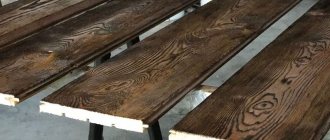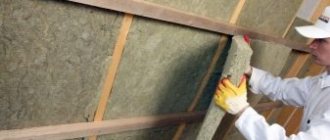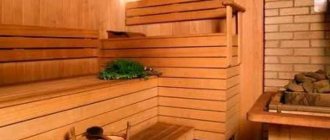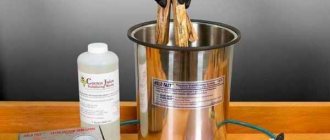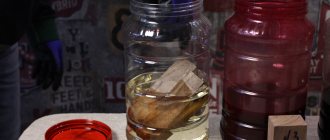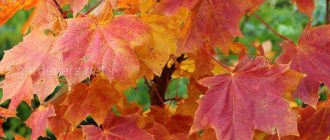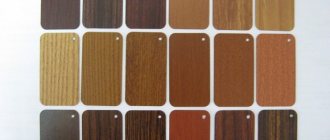Wood can rightfully be called one of the best building materials. Ease of use and versatility allow us to use wood for almost everything. Well, such shortcomings as susceptibility to fire, moisture, mold and pests, as well as other things, can be corrected with the help of processing agents. And one of these means is mastic based on bitumen or wax. In this article we will focus on its description, application methods and even methods for making it yourself.
The benefits of using mastic
Waterproofing is the main advantage of using mastic and its main purpose. The use of this processing material increases the wood's resistance to wear, improves its aesthetic characteristics, simplifies further cleaning, and much more. Floors protected with this composition receive protection from pests. For the same purpose, other wooden surfaces are treated with mastic.
Why do you need mastic?
Wood is considered a sensitive material, which is systematically subjected to heavy loads and loses its properties. This is possible due to the risk of contamination, mold and other negative consequences. To improve the protection of raw materials, it is customary to apply varnish to its surface. The substance will retain the original appearance of the coating and its basic properties unchanged.
Bitumen mastic increases the life of wood several times.
The service life of the material treated in this way will increase significantly if the wood is systematically coated with mastic. The product will not only increase the degree of protection of the boards, but also level the floor level.
The main advantages of using mastic for flooring include:
- ensuring complete waterproofing;
- ecological composition;
- relatively high wear resistance;
- providing protection from heavy loads;
- facilitates the cleaning process;
- adding shine and aesthetic beauty to the floor.
Such qualities explain the growing demand from consumers.
One-component and two-component mastic
One-component . Ready-to-use solution, without the need for dilution or other manipulations. This shows the simplicity of the work, since you don’t have to spend time on preparation. The disadvantage is that after opening the container, the coating begins to harden, and the mastic that we did not use will become useless in the future.
Two-component. As the name implies, this type of mastic consists of two components that are mixed in the required proportions, thus turning into a mixture ready for use. Separately, the components can be stored for a very long time, so this type of mastic is much more economical.
Nuances of hot compounds
Such mixtures have good permeability into the material and a long service life.
This product perfectly protects wood from dampness and moisture, so it is great for finishing bases, pillars, and so on.
To work with such mastic, the composition is heated to +180°. The use of hot substances is dangerous to human health, as there is a risk of getting burned.
Cold and hot mastic
Cold. The mixture is based on various chemical solvents, such as white spirit. It usually takes several days for a floor covered with such mastic to dry completely. Moreover, all this time there will be a strong chemical smell in the room, which is not only unpleasant, but also dangerous to health. So it is still advisable not to occupy the premises for several days.
Hot. Mastic created on the basis of bitumen or rubber. Before use, it must be heated to the desired temperature and consistency. This temperature, by the way, reaches 180 degrees Celsius. So you need to work with such a composition as carefully as possible so as not to get burns. You also need to be careful because the composition is fire hazardous. The advantage of this composition is that it hardens very quickly - up to several minutes.
Composition and main characteristics
Wood mastic is prepared from a variety of components and comes in different varieties. But in general, mastics have one common property: excellent waterproofing. If they contain natural components, then the protective layer can stretch, exceeding the original area by more than 20 times, but without spreading or deforming.
Some compounds do not harden completely even many months after application. They have excellent adhesion: they fit well on a wooden surface and do not come off for a long time.
Mastic allows you to create a water-repellent layer, provides resistance to dust, ultraviolet radiation and various contaminants. The main advantage over conventional varnish is that it penetrates deep into the fibers and extends their service life, rather than remaining on the surface, like conventional compounds.
Treatment with mastic protects the log house from moisture, rotting and ultraviolet exposure
Rules for applying mastic to wood
- Before work, you need to make sure that the surface is perfectly clean and does not contain old traces of paint or varnish;
- Try to apply the mastic in as thin a layer as possible, which will reduce drying time and improve the quality of the coating;
- Typically, mastic, when it comes to bitumen mortar, is applied once. However, depending on the application, up to three layers may be required;
- After application, the mastic can be polished with a cloth, thus achieving shine;
- In the case of polyurethane-rubber mastic, complete hardening does not occur. The material remains semi-liquid at all times. Therefore, it is used either in rooms with high vibration or in wet soils. The mastic with the best waterproofing properties is polyurethane-rubber. It can stretch up to 20 times and, regardless of the degree of movement and other factors, does not lose its insulating properties.
Conclusion
Bitumen mastic is considered a useful substance for treating floor surfaces. High-quality characteristics and relatively natural composition improve the protective properties of parquet and wooden boards, increase their service life, give them shine and a good appearance.
The mastic coating process has its own characteristics, so you should carefully select a product suitable for a particular type of wood and carefully study the instructions for use.
By purchasing bitumen mastic, you don’t have to worry about the condition of the floor: the wooden covering will be protected from dirt, abrasions and microorganisms.
Bitumen mastic – other applications
Having serious waterproofing properties, bitumen mastic is used not only for wood. For example, bitumen mastic is actively applied to concrete structures. The operating rules in this case are as follows:
As soon as the concrete hardens, it is cleaned of sand and dust. After this, in order to ensure better adhesion, the concrete must be treated with a bitumen primer. If this primer is well absorbed into the concrete, then it is best to reapply the layer. After this, you can proceed directly to applying mastic, choosing a bitumen or bitumen-polymer variation. In case of excessive thickness, the composition can be diluted with turpentine.
Application methods
Wood is protected with bitumen mastic using the painting method. That is, it is applied like regular paint using a brush or roller. It’s true that it will be difficult to wash the tools after work. This method is also suitable for small spaces. Bitumen mastic is viscous and quite difficult to work with. If you plan to waterproof a large area, it is worth considering a simpler and more economical method - spraying. Only it requires special equipment and skills to work with it. Such processing should be entrusted to professionals.
Making your own mastic
Coating wooden floors, including parquet, with wax mastic not only helps maintain resistance to water, but also significantly improves the appearance of the floor. At the same time, the composition of such mastic is quite simple, and you can prepare it with your own hands.
To do this, we need caranuba or beeswax, pine-based rosin and gum turpentine. The ratio of materials is 4x1x1. During preparation, wax and rosin are crushed and mixed, after which they are poured into one container, which is placed in a water bath. After dissolution, when the mixture becomes homogeneous, turpentine is poured into it. All that remains is to put the solution in the cold to make it thicker.
Features of hot solutions
Bitumen mastic may contain wax or water-based elements. Such characteristics determine the rules for applying the substance. Wax compounds are used for all types of wooden boards. The products add shine, increase the level of protection and maintain the natural appearance of the coating.
A bitumen water-based solution is considered universal and can be sold in a liquid, solid state or in the form of a kind of paste.
A unique feature of some models is the content of active elements that make it easy to clean the floor surface from dirt and dust.
How to make mastic from wax?
Here is another recipe for how to prepare wax mastic: Take 100g of wax, 25g of crushed rosin and 50g of purified turpentine. The product is rubbed with it and rubbed in with a piece of cloth or wool until the fabric stops sticking and a shine appears. Sometimes resin or cherry gum is added to the mastic.
Interesting materials:
How to disable remote access to a Windows 10 computer? How to disable remote access on Windows 10? How to disable USB ports in Windows 7? How to disable Windows 7 low memory notification? How to turn off Chrome notifications on Windows 10? How to disable Windows 10 keyboard from turning on your computer? How to disable Windows 10 keyboard from turning on PC? How to disable Voice Assistant Windows 10? How to disable all antiviruses on Windows 10? How to turn off all background programs in Windows 10?
What is waterproofing for wood ↑
Before you begin a detailed study of waterproofing methods, you should first of all understand what it is. Waterproofing for wood is an important component of construction work; it must be resorted to without fail, otherwise the consequences can be disastrous. It involves a simple, but quite labor-intensive process, during which the wood can be treated with a special compound, which, after drying, forms a dense base on the surface that is resistant to moisture and steam. Waterproofing can be carried out in several ways.
There is a wide range of moisture-resistant waterproofing coatings on the market recommended for use. It is completely in vain that many people trust the false statement that waterproofing for wood should be done only when it is planned to build baths, saunas, and log houses. Experts recommend treating the material with a waterproofing compound also in cases where roofing, interior and exterior finishing and other work is planned. Waterproofing will not only make the wood more resistant to moisture/steam, but will also prevent it from quickly rotting. It is also effective in the fight against harmful microflora. In rare cases, mold and fungi appear on wood treated with a special compound.
It is important to remember: only waterproofing for wood that meets certain requirements can flawlessly cope with its main functional tasks.
Rules for working with substances on wood
Work must be carried out with protected hands and gloves.
The composition has a high viscosity, so even when hot it does not blur, but during the application procedure you must definitely use protective equipment for the face and eyes.
The wooden base is cleaned of various contaminants and allowed to dry. If there is an old coating, it is completely removed, since the new coating may not saturate the material.
Preparatory work before creating an effective hydraulic barrier ↑
Before waterproofing wood, you should first prepare its surface:
- thoroughly clean it of accumulated debris and dust;
- seal cracks, cracks, holes, irregularities and bulges with special mastic, this will ensure the reliability of the protective layer;
- clean the surface again and treat it with a special antiseptic composition to remove fungi and mold;
- ensure good adhesion of waterproofing materials to the base being treated by applying a special primer mixture: it should be applied in several layers.
An important point: it is better to select a primer for wood of the same class as the waterproofing composition. It should have the right consistency and resemble thick sour cream. Before you start directly waterproofing, the prepared surface should be dried, and all joints and corners should be taped with a special waterproofing tape. It will provide high-quality protection for vulnerable areas from moisture.
